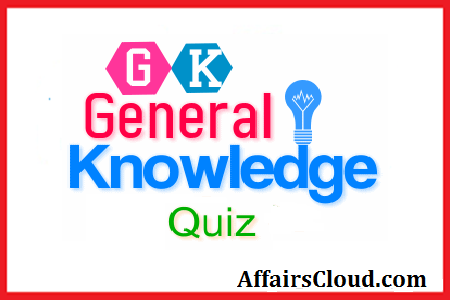Hello Aspirants. Welcome to Online General Knowledge section in Affairs cloud, which is important for all the competitive exams. We have created Some questions related to Indian GK(Indian Polity) !!!
- A federal structure of India was first put forward by which of the following act ?
1.Act of 1919
2.Act of 1990
3.Act of 1980
4.Act of 1950
5.None of theseAnswer – 1.Act of 1919
Explanation :
Part XI(11) of the Indian constitution defines the power distribution between the federal government (the Centre) and the States in India. A federal structure of India was first put forward by the act of 1919 - As per rules, government has to get all money bills related to the union budget passed within …………… days of the presentation of the budget.
1.90
2.80
3.75
4.60
5.None of theseAnswer – 3.75
Explanation :
As per rules, government has to get all money bills related to the union budget passed within 75 days of the presentation of the budget. - In the Indian National Flag, what does Asoka’s wheel represent ?
1.Language
2.Religion
3.Wheel of India
4.Wheel of the law
5.None of theseAnswer – 4.Wheel of the law
Explanation :
The 12 out of 24 spokes represent the twelve causal links taught by the Buddha and pratītyasamutpāda (conditional arising). The first 12 spokes represent 12 stages of suffering. Next 12 spokes represent no cause no effect. So, due to awareness of mind formation of mental conditioning stops. - What is the maximum strength of Supreme Court ?
1.30
2.32
3.31
4.28
5.None of theseAnswer – 3.31
Explanation :
The maximum strength of Supreme Court is 31 include Chief Judge - The prescribed feature for the amendment of the provisions of the Indian Constitution has been borrowed from ……………….
1.Canada
2.South Africa
3.France
4.German
5.None of theseAnswer – 2.South Africa
Explanation :
The prescribed feature for the amendment of the provisions of the Indian Constitution has been borrowed from South Africa - Which state was not a Union Territory before it was accorded the status of Full Fledged State ?
1.Sikkim
2.Telugana
3.Andhra Pradesh
4.Meghalaya
5.None of theseAnswer – 1.Sikkim
Explanation :
Sikkim was first given the Status of Associate State by the 35th Constitutional Amendment Act 1974. It got the status of a full State in 1975 by the 36th Amendment Act, 1975 - Protection of Interest of minorities is envisaged in which article ?
1.Article 25
2.Article 20
3.Article 29
4.Artcile 30
5.None of theseAnswer – 3.Article 29
Explanation :
Article 29 and 30, which provide for the protection of interests of minorities and Right to establish and administer educational institutions respectively - Taxes on minerals rights come under ……………………..
1.State list
2.Union list
3.Schedule list
4.Cocurrent list
5.None of theseAnswer – 1.State list
Explanation :
The State List or List-II is a list of 61 items (Initially there were 66 items in the list) in Seventh Schedule to the Constitution of India. Taxes on minerals rights come under State list - Which article is deal with the Finance Commission ?
1.Article 270
2.Article 380
3.Article 280
4.Article 180
5.None of theseAnswer – 2.Article 280
Explanation :
The Finance Commission of India came into existence in 1951. It was established under Article 280 of the Indian Constitution by the President of India. - The Maximum number of Lok Sabha seats from which state ?
1.West Bengal
2.Andhra Pradesh
3.Uttar Pradesh
4.Madhya Pradesh
5.None of theseAnswer –
Explanation :
The Maximum number of Lok Sabha seats from Uttar Pradesh – 80
The Minimum number of Lok Sabha seats from Tripura – 2
AffairsCloud Recommends Oliveboard Mock Test
AffairsCloud Ebook - Support Us to Grow
Govt Jobs by Category
Bank Jobs Notification



